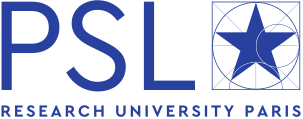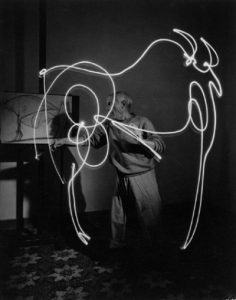IRIS
Création, cognition, société
Creation, cognition, society
General context of the Project
The research proposal “Creation, cognition and society” (CCS) is based on the general assumption that to understand the function and functioning of art and creation in human societies we must study simultaneously their individual implementation as a specific type of perceptual, cognitive and emotive experience, the intrinsically social and historical nature of the pragmatic framing of this experience, and the materiality and the technique of works of art, the support of the image perceived by the viewer. The long- term horizon, which justifies such an ambitious outlook, is fourfold:
- In contemporary societies artistic and aesthetic practices play an important role as a way of constructing individual identity and mediating its relationship with collective identity. This identity-creating role of creation and art can be observed in all contemporary societies whatever their differences in economical wealth, political regime or demographic scale. It goes hand in hand with a redefinition of the place of art and creation in society: the questioning of the distinction between “high” and “low”, the extension of the field of “art” by cooptation of creative practices formerly excluded (photography, film, television, design, fashion, …) leading to a « de-definition » of art constructed as a segregationist category, which is replaced by the integrationist category of “creation” the category of art in favor of the category of « creativity », which invites to explore the boundaries between artistic practices and other human creative practices, including science, engineering or design. These changes are a challenge not only for the critical discourse on artworks but also for descriptively and/or explanatory oriented research on arts, which is still largely dependent on a segregationist
- These transformations in the social life of arts and creative practices invite us to redefine our ways of conceiving and of studying them. Adopting an anthropological (transcultural) perspective one cannot fail to recognize that artistic practices as well as the experiencing of artworks (taken in the integrationist sense of the term “art”) are not only part of the reality to be explored scientifically but are also themselves (alternative) ways of exploring reality. Once one recognizes this one can no longer escape the further issue of the relationship of artistic experimentation with the way scientific or philosophical researches are studying reality. Art ceases to be only an object of study: it becomes also a possible partner in “hybrid” research-designs combining the « experiential » nature of artistic exploration of reality with the experimental nature of scientific cognitive modeling. This requires a transformation of the »traditional » relationship between research and creation, and a philosophical reconceptualization of art and more generally of creative practices
- Recent cognitive advances render obsolete the traditional separation between social and human sciences on one side, natural sciences on the other. For example cognitive science and contemporary philosophy of mind allow us to combine the classical “internalist” humanistic study of works of art with experimental and conceptual research trying to understand the mental processes of creation and reception of artworks (research on perception, on categorization processes, on the interaction of bottom-up and top-down cognitive processes, …). In a similar way, to understand the “agency” of artworks, the aesthetic study of the artistic properties of paintings, sculptures, masks, ritual objects must be combined with a precise study of their material incarnation (and its sensible translation in the eye of the beholder). And this is true also the other way round: cognitive studies or material-culture studies must integrate the cultural and historical dimension of artworks and creative artifacts and our way of experiencing them (reading them, looking at them, listening to them, or, more generally, interacting with them…). This in turn invites the social sciences to rethink their traditional approaches of the arts. To give only some examples: the redeployment of critical sociology as part of a pragmatic model renews the study of the social functioning of artistic practices by replacing the one-way causal models by interactional models; contemporary anthropology highlights the « agency » of artworks and invites to re- examine their ontological and functional status; historians have become conscious of the cognitive dimension of fictional stories, renewing the question of how factual knowledge can interact with fictional or counterfactual
- Newly introduced methods and tools are changing our ways of approaching traditional questions and open up the possibility of new ones. For example, statistical investigations, formerly mostly restricted to approaches of art in economical or sociological contexts now begin to be used to study the diffusion of formal principles, of narratological schemata, of pictorial techniques, of cinematographic genres,.. More generally, in the context of digital culture, statistical tools allow quantitative studies of large amounts of semantic or formal data across genres, artforms and more generally cultural artifacts. Access to increasingly large databases now requires the development of modeling tools that can automatically perform syntactical or semantic analyses across different semiotic forms. Experimental studies, for a long time restricted to the laboratory experiments of psychology of art, now begin to be undertaken in ecologically realistic contexts. This is notably the case of eye-tracking, used in the field of the experimental study of (still and moving) images and of three-dimensional artifacts, design-forms, artistic events, and more generally visual attractors. These new tools are of course not replacing the classical tools of study of artistic and creative practices (philology, hermeneutics, formal analysis, art history, musicology….) but they enrich them and render possible new questions and new modes of
The place of the CCS project in the scientific strategy of Paris Sciences et Lettres (PSL)
To meet the challenge outlined above, PSL is the ideal institutional context: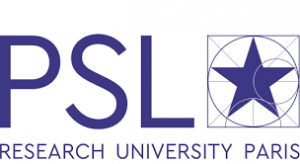
- PSL regroups some of the most reputed French research universities in human and social sciences as well as in natural sciences, engineering sciences and economy: Collège de France, EHESS, ENS, EPHE, MINES ParisTech, Université Paris Dauphine, ENSCP, ESPCI… Most of them are associated with the major national research institutions: CNRS, Inria and Inserm. In many of them, internationally high-ranking research in the domain of the arts and creation has been going on for a long time: this is the case for example of the College de France, EHESS, EPHE and ENS. Some research centers or research teams in these institutions are dedicated exclusively to the study of artistic practices, of philosophy of arts or of aesthetics, but many other research centers working in history, anthropology, sociology, political science, etc.) also devote a significant part of their research to artistic matters, addressing them in the perspective of social sciences. Other research focuses on cognitive underpinnings that production and reception of art share with other human activities, like language skills, motor planning, attention and memory (e.g. the Institut Jean Nicod, co-accredited by the CNRS, ENS and EHESS), or engage in mathematical modeling of cultural objects (CAMS, EHESS/CNRS). In the Ecoles d’ingénieur belonging to PSL some of the research-themes are also directly relevant in the context of our program. This is the case for example of the researches at Mines ParisTech addressing the transformations of the modes of planning, creation and cognition, which are redefining the links between technical, artistic and cognitive creation, or those mathematical modeling of image recognition. The same can be said of the research on memory and attention conducted at ESPCI. There already exist institutional collaborations in some domains. Some research units are not only accredited by several PSL institutions but also develop interdisciplinary programs, for example the Institut Jean Nicod but also the C2RMF, which is one of the internationally most important research units dedicated to the material analysis of artworks. One of the aims of the CCS project is to systematize this border-crossing research, notably by choosing “Boundary objects” and “Boundary questions”, which can only be addressed by the collaboration of several scientific disciplinary fields.
- The second characteristic of PSL, which makes it the ideal institution for launching CCS, is that it regroups not only the aforementioned research universities but also the five nationally leading art-schools: ENSAD, FEMIS, the CNDAD, the ENSBA and the CNSMDP. They have begun to regroup their research-activities around an innovating graduate program (PhD SACRE) combining academic and artistic research and leading to PhD diploma centering on the creation of a work of art. But the presence of the art- schools in PSL is also an opportunity for the research universities to mount “hybrid” research-programs regrouping « academic » scientists and artists around scientific joint- ventures. Several of the research projects proposed by CCS include hybrid research components of thisGiven these two characteristics of PSL, CCS has an important structuring potential for its research dynamics: due to its perimeter, its objects and its methodological outlook CCS involves researchers in the human and social sciences, cognitive science, psychology, philosophy of mind, medical science but also natural sciences and engineering sciences. The number, disciplinary diversity and quality of the research teams, which are involved in the project render it possible to construct an ambitious research agenda, whose ultimate goal is to transform PSL into one of the international leading research universities in the domain of an integrationist and interdisciplinary approach to the problem of human creativity, art and aesthetics.
The defining characteristics of CCS
CCS possesses several main characteristics:
- It promotes a flexible architecture of shared research themes, regrouping different institutions, disciplines and research groups. PSL can use several levers to build this architecture. The projects submitted for the launching phase of CCS are all using one or the other of the following three levers: i) encouraging collaborations between existing research teams of different institutions of PSL whenever the scientific actors feel they would benefit from collaborating with each other; ii) transforming mono-institutional research-teams to inter-institutional ones by inviting researchers or teams from other PSL universities (or from art-schools) to join an existing mono-institutional research- program whenever such an inter-institutional extension is thought to have a potentially catalytic effect (for example because it would coopt new disciplines or methodologies); iii) the construction ab ovo of a small number of structuring inter- or trans-disciplinary research programs regrouping researchers or research-teams from different institutions of PSL. Mobilizing competences from the various disciplines represented in PSL, and/or establishing a synergy between academic research and artistic experimentation, these structuring programs aim to contribute to the construction of the specific scientific identity of PSL. For the launching of CCS two structuring programs are proposed. It is assumed here that one of the measures of their success will consist in their ability to replace their initial financing by PSL after the first three years by external funding (ANR, European projects, etc.).
- It promotes a tight link between research and training programs (master, PhD). At the doctoral level, the SACRE graduate school is of strategic importance, as it is founded on the project of overcoming the divide between academic research and artistic experimentation. Other collaborations already exist, in particular, the master « Music », co-accredited by EHESS, ENS, EPHE and CNSMDP, the Master « Literature Theory » co – accredited by ENS, EHESS and University of Paris I. Moreover, it will be important to develop Cifre PhDs, which are important instruments for establishing links between academic and economic actors, and to promote the “co-tutelles” with foreign universities, which are a central tool for the internationalization of research and training.
- It promotes hybrid research-collaborations between researchers and artists. Hybrid projects combining « academic » research and artistic experimentation should be strongly encouraged, since they allow to take advantage of one of the institutional specificities of PSL. Some institutions, for example ENSAD, have already extended experience in this field (and it would seem appropriate to promote this type of research as an international marker of PSL research.
- It promotes international research. Most of the higher education institutions and art- schools, which belong to PSL, have important international collaborations, both at the level of research and of that of training. CCS wants to take advantage of this international network to construct international research
- It promotes collaboration with cultural institutions: concert halls, museums, … This collaboration is especially vital in the case of the two structuring program.
- It promotes societal and economical relevance of the research on creation and arts. CCS encourages projects, which associate public research with, for example, cultural institutions, local collectivities, associations or private enterprises…
Research programs
The CCS program is structured around three thematic lines of research and two structuring programs :
AXE 1 Creation : Art as experimentation, experimentation as art.
(Dir: Emmanuel Mahé, Claire Lasne Darcueil)
This first axis of CCS addresses the question of the creative process defined as a specific mode of cognitive experimentation and of its interactions with other modes of cognition. The stakes of creative experimentation are diverse – technological, social, political, ecological, …, as diverse in fact as those of the other human modes of cognition. The five proposals of this axis have one common characteristic: all of them experiment ways of bringing together the “experiential” cognitive mode of creation and the abstract “modelizing” mode of scientific cognition. This first axis has strong ties with the EA 7410 (SACRE) built around the PhD program of the art-schools of PSL, and more generally is organized around collaborations between “academic” research-teams and artistic practice (and training).
AXE 2 Cognition: Arts, design, aesthetics, technical creation. Cognitive foundation
(Dir. Jérôme Sackur, Armand Hatchuel).
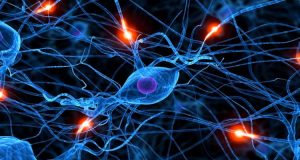 Whatever the material and ontological status of the outputs of creation they operate as such only if and when they are activated attentionally by bodily incarnated acts of perception and cognition. This is due to the fact that artworks (seen as artifacts or intentional events) are cognitive prostheses : their mode of being is that of specific cognitive operators and not that of “brute facts”. This implies that they are produced in a certain way and achieve specific effects, which opens the question of their relationship with other modes of cognition. The second axis of CCS regroups proposals addressing the one or the other of these two faces of the cognitive dimension of creation : how are the created products (objects, events) perceptually and cognitively activated? and : what are the cognitive characteristics of the creative process? Are they perhaps defining creative thought as such, whatever its domains and modalities? Is it possible to construct a “generic epistemology “of creation (see Schmid A-F, Hatchuel A (2014) On Generic Epistemology. Angelaki: Journal of the Theoretical Humanities 19 (2):131-144).
Whatever the material and ontological status of the outputs of creation they operate as such only if and when they are activated attentionally by bodily incarnated acts of perception and cognition. This is due to the fact that artworks (seen as artifacts or intentional events) are cognitive prostheses : their mode of being is that of specific cognitive operators and not that of “brute facts”. This implies that they are produced in a certain way and achieve specific effects, which opens the question of their relationship with other modes of cognition. The second axis of CCS regroups proposals addressing the one or the other of these two faces of the cognitive dimension of creation : how are the created products (objects, events) perceptually and cognitively activated? and : what are the cognitive characteristics of the creative process? Are they perhaps defining creative thought as such, whatever its domains and modalities? Is it possible to construct a “generic epistemology “of creation (see Schmid A-F, Hatchuel A (2014) On Generic Epistemology. Angelaki: Journal of the Theoretical Humanities 19 (2):131-144).
AXE 3 Society: The social framing of production, circulation and reception of arts and creative practices.
(Dir. Philippe Roussin)
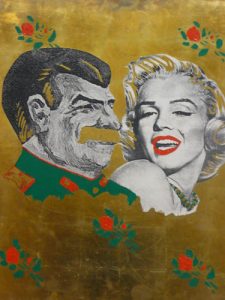
The production and reception of artistic and more generally creative devices are always social in nature, which implies hat they are always historically and culturally individuated. This means among others that, like any other social practice, they are embedded in the relationships of power and domination characterizing the society in which they are created and received. On a collective level this manifests itself in the fact that creation and reception of artistic devices are always structured by socially shared representations and norms. In societies with complex power- and dominance relationships there generally exist several conflicting sets (along lines of social class, genre, ethnicity, and so on) of such shared representations. On the level of the individual acts of creation and reception these shared cognitive schemes, evaluating norms, etc. operate as top-down representations possessing a structuring function in the creative process (as norms for example) as well as on the level of reception (for example as schemes of interpretation or acquired preferences).
